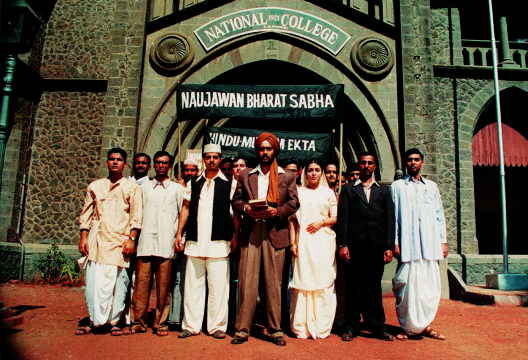The screenwriter considers his work one of the primary reasons why the film didn't click at the box office.
15 years of The Legend Of Bhagat Singh: How Gujarat riots influenced writer Anjum Rajabali
Mumbai - 07 Jun 2017 10:46 IST
Updated : 08 Jun 2017 1:06 IST


Keyur Seta
In the age of biopics, it is worth looking at one of the first biopics of this millennium — Rajkumar Santoshi’s The Legend Of Bhagat Singh (2002). The film completes 15 years today (7 June). Over this period, it has become one of the most admired patriotic and historic Hindi films.
On the occasion of its 15th anniversary, writer Anjum Rajabali went down memory lane, talking about his work in the Ajay Devgn-starrer in an exclusive conversation with Cinestaan.com.
The film has been appreciated after its numerous television runs over the past decade and a half. But it didn’t do well at the box office when it was first released. Rajabali admitted that while box-office failure does not generally affect him, that wasn’t the case with The Legend Of Bhagat Singh. “The Legend Of Bhagat Singh perhaps hurt me a little bit because it had taken 17 months to write it, with all the research,” he said.
Looking back now, he sees an error in the script, which, according to him, was one of the reasons for the film’s box-office failure. "The feeling that I have, and it’s an honest assessment, is that one of the primary reasons for its failure was my work. I feel my whole emphasis towards historical accuracy and authenticity that Bhagat Singh was a leftist, Marxist, secularist and had certain views didn’t come out [in the film]."

He believes that the film ended up showing Bhagat Singh to be a typical hero. "We always saw [in the film] that he was a man of action. Goli maar di, bomb fek diya [he fired guns, hurled a bomb]. He was like a hero!"
That wasn’t the real Bhagat Singh, however. "There was a lot of wisdom in what he did," said Rajabali. "He gave up violence completely after shooting deputy [John] Saunders down. When he threw the bomb [in the central legislative assembly to oppose the Defence of India Act], it was nothing. It was just meant to create noise. He gave himself up [surrendered]. He actually went to his death and he said in the process I can actually speak what my vision of this country is."
In December 1928, along with an associate, Bhagat Singh had fatally shot British police officer Saunders (21), mistaking him for the police superintendent, James Scott, whom they had intended to assassinate.
What influenced Rajabali's script greatly were the 2002 Gujarat riots. "When the last draft was being written, the Gujarat episode took place in 2002. And that really shook me up! Bhagat Singh stood as a counterpoint. He was a die-hard secularist and he talked about not mixing religion and politics. Those things never came out in history. So, I began emphasizing on that point. So, in the history, politics and ideology, I tended to lose out on the person and his emotionality. It lost out on its sort of emotional dramatic quality. It became like a document. Was it historically accurate? Yes, that I will vouch for, because I really worked hard at it."
Four other films on Bhagat Singh's life were made and released at about the same time as The Legend Of Bhagat Singh. The film’s closest competitor was Guddu Dhanoa’s 23rd March 1931 Shaheed, which was released on the same day.

Many believed that this multiplicity of films on the same subject was the reason why The Legend Of Bhagat Singh did not click, but Rajabali does not agree. "It was silly that it [five films on the same subject] was happening like that. But that marginally cut into it because other films, really speaking, didn’t get much viewership," he said. "Also the one released the previous week [Shaheed-e-Azam]. So, we did have a chance. Among those five was ours the better made? Even I would say so. Definitely ours was better made and better written. But that doesn’t necessarily mean it was good enough."
However, along with the positive response to the film on television later, Rajabali has another big reason to smile. "It became a big hit guess where? With schools. It became like a history lesson. That was like a small mercy. I must have gone to 25-30 shows where entire schools had come. And I was being asked to talk about the film," the writer said.



